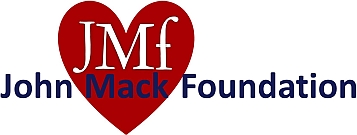A strong Chain of Survival can improve chances of survival and recovery for victims of heart attack, stroke and other emergencies.
In less than 12 minutes, you can watch all the videos below, get a refresher on CPR training and more fully understand your role in the chain of survival.
Let’s break it down link by link.
 Link 1: Immediate recognition of cardiac arrest and activation of the emergency response system
Link 1: Immediate recognition of cardiac arrest and activation of the emergency response system
Cardiac arrest warning signs:
- Sudden loss of responsiveness – no response to tapping on shoulders.
- No normal breathing – the victim does not take a normal breath when you tilt the head up and check for at least five seconds.
If these signs are present call 9-1-1.
 Link 2: Early cardiopulmonary resuscitation (CPR) with an emphasis on chest compressions
Link 2: Early cardiopulmonary resuscitation (CPR) with an emphasis on chest compressions
About 92 percent of sudden cardiac arrest victims die before reaching the hospital, but statistics prove that if more people knew CPR, more lives could be saved. Immediate CPR can double, or even triple, a victim’s chance of survival.
Defibrillation is a process in which an electronic device gives an electric shock to the heart. This helps reestablish normal contraction rhythms in a heart having dangerous arrhythmia or in cardiac arrest. In recent years, small portable defibrillators have become available. These are called Automated External Defibrillators or AEDs.
 Link 4: Effective Advanced Cardiac Life Support (ACLS)
Link 4: Effective Advanced Cardiac Life Support (ACLS)
ACLS focuses on the response of highly-trained professionals such as paramedics who can administer life saving medications, provide advanced airway support and initiate protocols and interventions prior to arrival to the hospital.
 Link 5: Integrated Post-Cardiac Arrest Care
Link 5: Integrated Post-Cardiac Arrest Care
Post-cardiac arrest care is provided to the patient in the hospital after he or she survives the initial cardiac arrest. After a cardiac arrest, patients may continue to be unstable and require interventions from a multidisciplinary team of specialists to treat heart and lung dysfunction, institute therapeutic hypothermia and manage blockages of coronary vessels.
The above video clips are from the Second Opinion episode CPR in America. For the full episode, see news post “Second Opinion’s “CPR in America” Episode“.
Source: American Heart Association & Second Opinion


